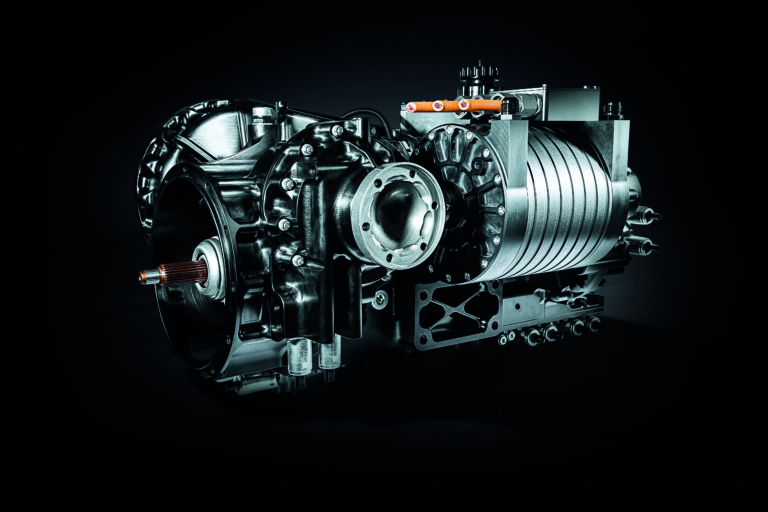Despite travel restrictions in 2020, development of Zenvo’s first hybridized transmission continued at pace. By focusing on design processes that it could complete within its headquarters in Denmark, the company had its first prototypes ready for track testing, which began in the autumn. For founder and chief technical officer Troels Vollertsen, electrification isn’t about compliance – it’s an indispensable component of the hypercar manufacturer’s technological arsenal.
Development began in simulation around two years ago. The new hybrid system is derived from the 7-speed sequential dog box already used range-wide, but features a 160kW (peak) electric motor from Mavel attached to the input shaft. A small-capacity, fast-discharge-rate energy storage unit will enable the motor to provide an electric boost function while accelerating, and Vollertsen is open-minded about the technology that production versions will use.
“It would be stupid to lock yourself on any battery technology when you know that the car won’t be in production in the next four years,” he says, “so we are developing it with the best batteries and capacitors that are available right now, but we will probably have something better in three years, and that is what we are going to use.”
As in the non-hybridized version, the gears are supplied by CIMA and, unusually for a dog box, they are helical rather than straight cut, which minimizes transmission whine. Because the electric motor is used for reversing, there’s no need for a dedicated gear, which creates space for an eighth gear for high-speed cruising. Customers will be able to choose from Race, Road and Intermediate drop gears when they commission a build.
Electrification also offers finer control of shifting, helping to combat the shunting that’s common with dog gears. To date, Zenvo’s proprietary technology has used sensors to accurately measure output and input shaft speeds, and an electrohydraulic mechanism to brake the latter so they match. The hybridized version uses the e-motor to do this, quickly synchronizing shaft speeds to offer smoother engagement, while offering the advantage of 30ms powershifting in Race mode.
Weight, durability and refinement were optimized in simulation. At 125kg, the transmission is around 35kg heavier than its non-hybrid counterpart, though Vollertsen says this is largely due to newly integrated power electronics and other ancillaries. The motor adds around 26kg, but required the clutch to be reversed to avoid enlarging the housing. Virtual models have demonstrated torque handling capabilities in excess of 1,100Nm, and planned heat testing on track will assess new low-friction materials employed internally.
“Simulation told us that it’s more or less just on the crown wheel and pinion that these materials make sense,” explains Vollertsen. “We made three prototypes for the internals, we have one set with a tungsten [carbide (WC/C)] coating, as used in Formula 1. It will optimize efficiency, but for us it’s very important to see how much colder it will run. The simulation says when you’re going 250km/h [155mph], it should lower temperatures by 25°C [45°F].”
Comparisons with virtual models are due shortly. A track-prepared TSR mule chassis was retrofitted with the hybrid system in September, and engineers spent a couple of weeks at the Porsche Technical Center in Nardò before the end of 2020. And Vollertsen says that prior to that, the company carried out extensive assembly testing, aiming to streamline later processes.
“Instead of doing heat testing at Nardò and finding issues when we are in southern Italy, we tried to do as much as possible here in ovens, the freezer and the dyno,” he says. “We have a lot of expectations, but we also need to prove it to ourselves in real life.”


